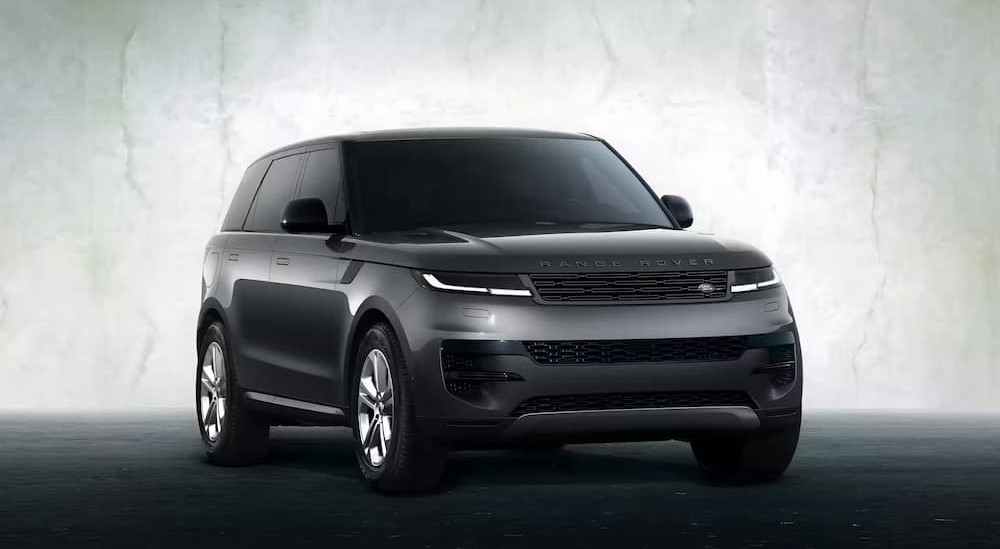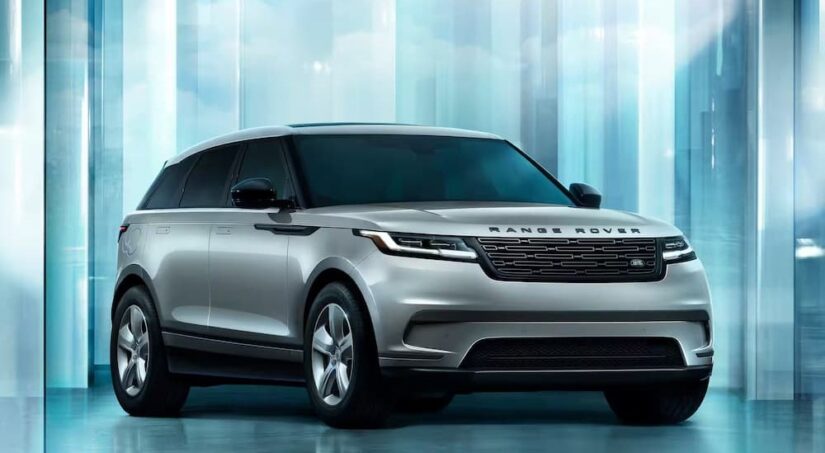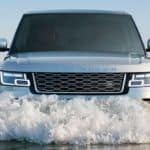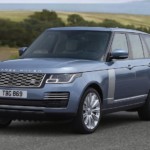When it comes to luxury and off-road performance, the Range Rover is tough to beat. The iconic 4×4 has carved out quite a niche over the last 50 years, providing drivers with a unique synthesis of rugged design and opulence and earning it plenty of industry plaudits in the process. While those qualities are still as important as ever, today’s auto market is evolving at a breakneck pace. Fuel efficiency is becoming an increasingly important consideration for many buyers, ranking alongside reliability, driving comfort, and performance as make-or-break factors.
Land Rover could probably ignore such trends if it wanted to––those shopping in the high-end luxury market tend to make fuel efficiency less of a priority––but the brand has embraced the challenge to produce a raft of new all-electric and hybrid options. The all-new Range Rover Electric will make its debut later this year, rounding out current mild-hybrid (MHEV) and plug-in hybrid (PHEV) engine options for the Range Rover, Range Rover Sport, and Range Rover Velar. It’s all part of Land Rover’s $19 billion push to prioritize electrification and achieve net-zero carbon emissions by 2039. So how do these MHEV and PHEV models compare when it comes to range, efficiency, and power, and what does the Range Rover Electric hold in store? We’ll answer all that and more as we get plugged into Range Rover’s hybrid and electric offerings.
Range Rover Electric (BEV)
The Range Rover Electric represents one of the most exciting advancements in the SUV’s 50-plus years on the market. Initially pegged for a 2025 launch, Land Rover has since moved up the timetable, with the all-electric model slated to hit the road later this year. The automaker is keeping some of the finer details under wraps for now, but we do know that the EV will ride on the new MLA platform that can accommodate gas, plug-in hybrid, and electric powertrains. Based on the existing fifth-generation Range Rover, the SUV should provide more than enough room for both passengers and their cargo while also accommodating the battery and other EV-specific components.
All-electric SUVs are nothing new, but Land Rover still had a real challenge on its hands when it came to designing the Range Rover Electric. While most EVs are a little fickle when it comes to extreme hot and cold temperatures, the Range Rover’s go-anywhere reputation required designers to ensure the all-electric version was just as rugged as the traditional gas-powered model. Land Rover took the new electric model on the road, subjecting it to the frigid Swedish winter and the sweltering, 122-degree deserts of the Middle East. The Range Rover Electric also had to be able to withstand being submerged in up to 33 inches of water: no small task for an electric vehicle. Land Rover says the EV has gone through “our most rigorous engineering sign-off programs ever,” running a veritable gauntlet that includes testing on a wide range of road conditions.
There’s nothing luxurious about waiting around for your vehicle to charge, which is why Land Rover has made charging time a priority when it comes to the Range Rover Electric. The SUV should be one of the market’s fastest-charging EVs upon its release––so fast, in fact, that it surpasses the capabilities of the country’s current charging infrastructure. Most of today’s DC fast chargers max out at 480 volts, but the Range Rover Electric will be able to accommodate 800-volt charging. That should allow the SUV to charge to 80 percent in a matter of minutes, rivaling the traditional gas pump in terms of speed. While Land Rover hasn’t unveiled any of the specifics when it comes to performance, the automaker says the Range Rover Electric should offer “performance comparable to a flagship Range Rover V8”. That extends to the SUV’s off-road ability as well as the cabin where Land Rover is working to integrate the latest in noise cancellation and sound design technology.

Range Rover (PHEV/MHEV)
Hybridization is nothing new for the iconic Range Rover, which has been leveraging the technology in one form or another since 2014. The first hybrid option was paired with a diesel engine and was followed in 2018 with a gasoline PHEV model. More options were introduced for the fifth-generation model, giving drivers several electrified powertrains to choose from when it comes to the 2024 Range Rover.
The lineup starts with the P400 turbocharged 3.0L I-6 engine paired with a 48-volt mild hybrid system that Land Rover bills as an “electric supercharger.” With 395 hp and 406 lb-ft of torque, this option is anything but mild and has a zero to 60 mph time of 5.3 seconds. That might not be setting any records, but when you consider the luxury SUV’s heft, it’s not a bad showing. The long-wheelbase version of the Range Rover can weigh in at nearly three tons, so while the MHEV’s EPA-estimated 18 MPG in the city and 26 MPG on the highway might not seem all that impressive, a little context is important.
Those seeking the ultimate in fuel economy should consider upgrading to the PHEV version of the 2024 Range Rover. Powered by Land Rover’s P550e powertrain, the plug-in is hard to beat with a combined 51 MPGe. That’s made possible by combining the Range Rover’s turbocharged 3.0L I-6 engine with a 215 hp electric motor, allowing the SUV to achieve a combined 542 hp and 590 lb-ft of torque.
The WLPT estimates the Range Rover’s all-electric range is an impressive 79 miles, although the official EPA estimates will likely be lower. That’s a pretty good showing and is the result of the model’s huge 38.2 kWh battery. There’s just one catch when it comes to the Range Rover PHEV––it’s only available for the standard wheelbase SE and Autobiography trims and starts at $119,900. If you want a long wheelbase model or the top SV trim, you will need to select one of the model’s MHEV powertrains.
Range Rover Sport (PHEV/MHEV)
The Range Rover Sport follows in the proud tradition of other “Sport” models, which generally offer a smaller, more athletic alternative to their larger namesakes. The midsize luxury SUV was actually one of the trailblazers of this trend in the modern 4×4 segment when it first hit the market in 2005. Since 2013, the Sport has been offered with an aluminum body, giving drivers the chance to enjoy a more dynamic driving experience that experts compare to other performance-minded SUVs like BMW X5 and Porsche Cayenne.
Like the classic Range Rover, the Sport is offered in both MHEV and PHEV guises. In fact, those are the only powertrains on offer for 2024. The entry-level mild-hybrid drivetrain is almost identical to the turbocharged 3.0L I-6 found in the Range Rover, right down to the 48-volt hybrid system. The only difference is in the output, which is reduced to 355 hp for the SE trim. Upgrading to the Dynamic SE trim ups that number to 395 hp while keeping the price below the all-important $100,000 mark. As far as efficiency is concerned, both MHEV versions of the Sport deliver 21 MPG combined, which is pretty impressive when you factor in the curb weight of over 5,000 lbs.
Again, the PHEV rules the roost when it comes to efficiency. The Range Rover Sport P550e PHEV drivetrain combines a 3.0L I-6 with a beefy electric motor to provide an EPA-estimated 53 MPGe. The SUV’s plug-in drivetrain should provide plenty of all-electric range, but it’s the trim’s performance that really marks its biggest selling point. Land Rover has upgraded the PHEV’s electric motor for 2024, giving drivers a combined 543 hp to play with. That’s good enough for a zero to 60 mph time of 4.7 seconds and makes the Sport the most exciting model to wear the Range Rover name.
Range Rover Velar (MHEV)
Range Rovers are known for being some of the most imposing vehicles on the road, but Velar is cut from a different cloth. Introduced in 2017, the model is slightly larger than the Range Rover Evoque but still represents one of the smaller options in the modern Range Rover lineup. The SUV’s diminutive size offers some real advantages when it comes to comfort and practicality, making it a great option for drivers looking to enjoy Range Rover performance without feeling like they’re hogging the road.
Unlike the Range Rover and Range Rover Sport, there is no plug-in hybrid powertrain, leaving two MHEV options to choose from. The first, a turbocharged 2.0L I-4 paired with a 48-volt mild-hybrid system, provides drivers with 247 hp and 269 lb-ft of torque. Those in the market for a little more power should look into the Velar’s P400 drivetrain, which uses a 3.0L I-6 engine. It’s no slouch when it comes to performance, with the ability to speed from zero to 60 mph in 5.2 seconds. While this may be a smaller member of the Range Rover family, it has fully embraced electrified performance.
Staying Ahead of the Curve
The Range Rover, Range Rover Sport, and Range Rover Velar aren’t the only Land Rover models getting the hybrid treatment. The British automaker has also treated consumers to electrified versions of the off-road-focused Defender and midsize Discovery in recent years. Like the Range Rovers listed above, these models combine Land Rover’s reputation for luxury and performance with new eco-friendly drivetrains. It can be a tricky balancing act, but Land Rover has managed to pull it off without sacrificing the qualities that have brought the company so much success for more than 70 years. Between Land Rover’s current hybrid offerings and the forthcoming Range Rover Electric, the legacy automaker is staying well ahead of the curve. This is nothing new for Land Rover, but it’s good to see the company isn’t resting on its laurels when it comes to integrating new hybrid and all-electric options into the lineup.



